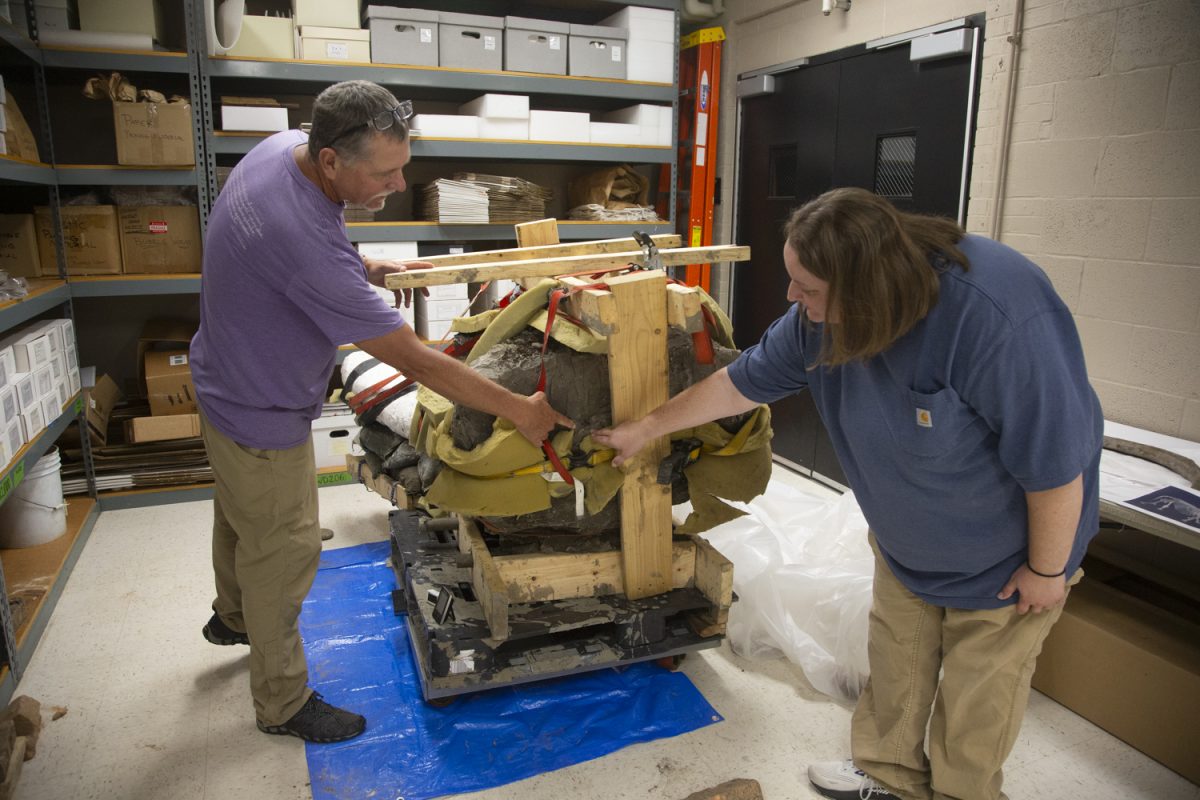Community volunteers and researchers at the University of Iowa came together to preserve history and make the discovery a lifetime.
Members of the Iowa Office of the State Archaeologist were contacted in late 2022 by Dale Clark, a member of the Iowa Archeological Society, reporting that a mastodon bone had been discovered in Wayne County, located in the southern part of the state bordering Missouri.
Mastodons are characterized by long and upward-curving upper tusks and small or absent tusks on the lower jaw, and they belong to the same family as mammoths and elephants.
John Doershuk, one of the main researchers who work for the UI archeology office, made several visits in 2023 alongside his colleagues to learn more about the most complete scientifically excavated mastodon in Iowa as soon as it was confirmed.
“For my part as state archeologist, the opportunity to investigate is tremendously significant as there are many avenues of current archaeological research to which we might be able to contribute useful information,” Doershuk said.
The mastodon femur was found in a remote private area where the landowner agreed to not only cooperate but also participate in the excavation.
Doershuk said this project is an exceptional example of how the UI can work collaboratively with a rural Iowa community to undertake substantive research that is meaningful to both the academic world and the local community.
Doershuk said volunteers in the area donated more than 1,000 hours of work supporting all aspects of the excavation. They collected a sample for radiocarbon dating 13,600 years, establishing the mastodon’s age.
According to Doershuk, the remains were eroding from a cut bank around 25 feet below the access point. The cut bank, he shared, is actively eroding and is subject to rapid water level changes due to thunderstorms.
The heat proved another challenge, as the first six dig days experienced 102 to 113-degree heat indexes.
Clark, a member of the Iowa Archeological Society who contacted the UI team, said one of the key parts of this expedition and research was the opportunity to bring the community together.
“Coming from a small community, that was easy, where everyone knows everyone,” Clark said.
Clark said because of the community support and involvement, the project was successful.
Brenda DeVore, director of the Prairie Trails Museum, who aided in the discovery, successfully secured two grants and several donations from community members to support the excavation.
“All the local volunteers were excited to work on this once-in-a-lifetime project to excavate a mastodon,” DeVore said. “The local people were willing to help in any way and gave generously of their time and resources.”
Doershuk said, in partnership with the Prairie Trails Museum, they will make the crania of the mastodon and the surviving portion of the attached tusk the central feature of an exhibit at the museum. They will attempt to 3D-print the missing portions to help the integrity and preserve the parts to enhance the public experience, he said.
“Everyone involved with the Prairie Trails Museum are anxiously looking forward to 2026 when the new exhibit is installed,” DeVore said.



